THE NATURAL HISTORY ROOM
Hurricanes Case
Welcome to "1935 Labor Day Hurricane" shelf.
[ Click Here for our home page for all 1935 Hurricane
related files.]
Page 1
This page by Jerry Wilkinson
- The Residents -
(Let's begin with some representative
groups
who would have been present in the Upper Keys when the 1935 Hurricane
struck.
Remember to click on the image to enlarge once. Each photo contains "a
thousand words" so one may wish to look for details. J.W.)
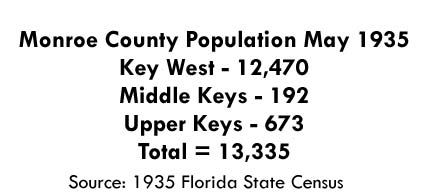
The population density of the
Upper Keys
at the time the hurricane struck is important. The above figures are
from
Long Key to the Card Sound Bridge on north Key Largo. What is not shown
are the transient or temporary personnel who are not counted as
official
residents on a census. The largest in number present were about 750
World
War I veterans building a bridge to begin the elimination of the ferry
boats. They were not counted.
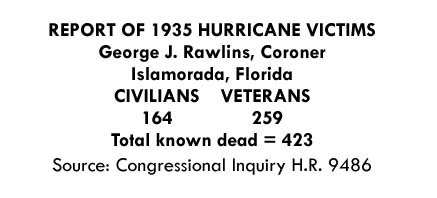 There were 62
additional bodies found after Mr. Rawlins filed his report ot a total
of 423; therefore, 485 was the final officially verified number - April
28, 1936. The largest change was the death of civilians was upped to
228, while the veterans were decreased to 257. More bodies and
skeletons have been found in later years.
There were 62
additional bodies found after Mr. Rawlins filed his report ot a total
of 423; therefore, 485 was the final officially verified number - April
28, 1936. The largest change was the death of civilians was upped to
228, while the veterans were decreased to 257. More bodies and
skeletons have been found in later years.
This high number of victims of a
relatively
sparsely populated area is of significant. It occurrence on the Labor
Day
week end should be considered. Many of the veterans were away and
scheduling
of a relief train was more difficult than normal.
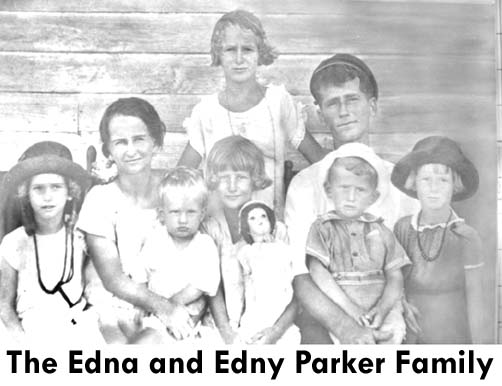 Shown above is the Parker family of
Matecumbe
which is representative of a pioneering Upper Keys family.
Shown above is the Parker family of
Matecumbe
which is representative of a pioneering Upper Keys family.
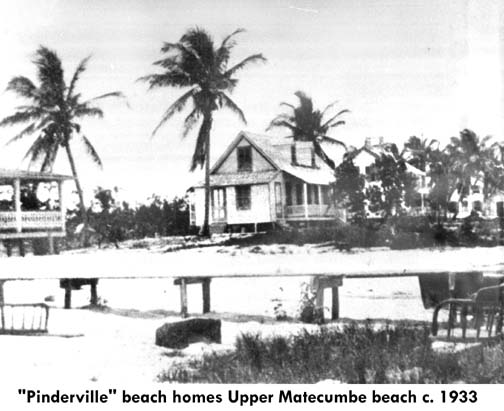 Most homes were of wood and along the
Atlantic
beach. This took advantage of the summer breezes, less afternoon sun
heating,
fewer mosquitoes and away from from the winter "northwesterners." This
row of homes were located at about MM 81.3 in the Pinderville part of
Matecumbe
now known as Islamorada.
Most homes were of wood and along the
Atlantic
beach. This took advantage of the summer breezes, less afternoon sun
heating,
fewer mosquitoes and away from from the winter "northwesterners." This
row of homes were located at about MM 81.3 in the Pinderville part of
Matecumbe
now known as Islamorada.
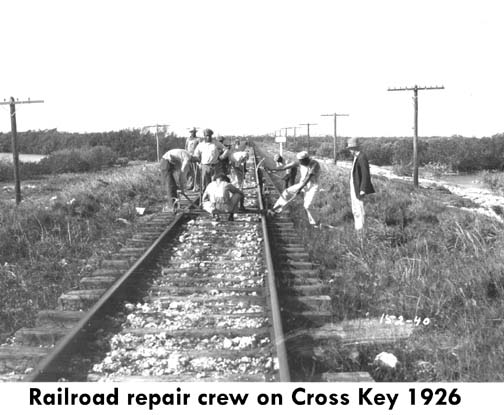 There would have been permanent
railroad crew
personnel as well as transient workers. Typical workers would have been
sections gang personnel for repair, station agents, water tower
operators,
etc.
There would have been permanent
railroad crew
personnel as well as transient workers. Typical workers would have been
sections gang personnel for repair, station agents, water tower
operators,
etc.
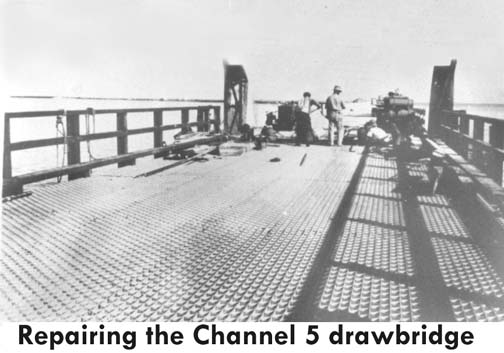 There were not a great number of State Road
Department personnel for routine repair of the Overseas Highway.
However,
there was a second group overseeing the construction of the new bridge
by the Federal Emergency Relief Administration (FERA) from Lower
Matecumbe
Key to Jewfish Bush Key (now Fiesta Key).
There were not a great number of State Road
Department personnel for routine repair of the Overseas Highway.
However,
there was a second group overseeing the construction of the new bridge
by the Federal Emergency Relief Administration (FERA) from Lower
Matecumbe
Key to Jewfish Bush Key (now Fiesta Key).
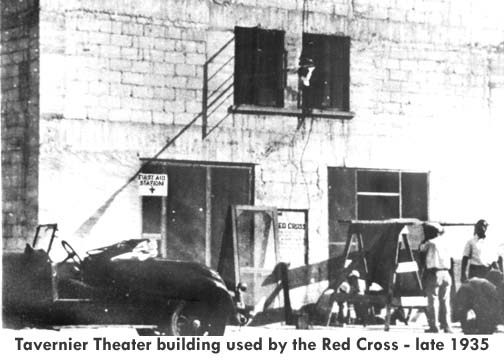
Even though the above photo is post
hurricane,
the concrete block theater building was being built in Tavernier
principally
for the veterans before the hurricane. It is presently a hotel. Now for
the veterans.
Continued on Page 2
Go to Page 2, or
Return to the Natural History
Room
|







